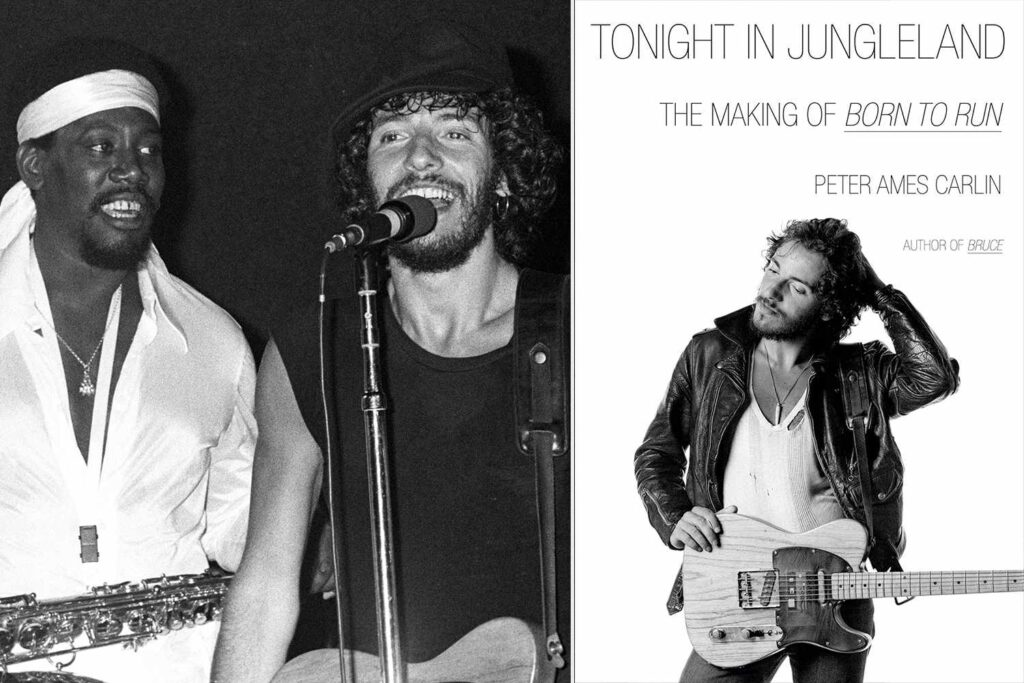NEED TO KNOW
The cover of Bruce Springsteen’s Born to Run is just as iconic as the songs it contains, and a new book is shedding insight into how it came together.
Peter Ames Carlin writes in his book Tonight in Jungleland: The Making of Born to Run that Springsteen, now 75, decided to have his bandmate, legendary saxophonist Clarence Clemons, pose with him on the cover in part as a statement against racism. Springsteen and Clemons — perhaps the most famous member of the E Street Band — remained close friends and collaborators until Clemons died in 2011 at age 69.
Carlin spoke to David Sancious, who was a member of the E Street Band for the first three albums (and contributed on three later releases). Sancious remembered one afternoon in 1973 when he was enjoying himself at the beach on the Jersey Shore’s Long Beach Island before a show. Sancious, now 71 but then a teenager, soon realized he was the only Black person, and faced racist harassment from fellow beachgoers. Then Springsteen showed up.
Richard Corkery/NY Daily News Archive via Getty
“I was ready to knock those f—— right over the f—— head,” Springsteen told Carlin, who noted that the young singer was neither particularly tall nor strong. “It was a really ugly scene. They tiptoed right up to the line, you know, being loud enough so we could hear them. It was one of the ugliest scenes I’ve seen in my life. You know, just in-your-face racism. Right here on the beach.”
Then Clemons — who Springsteen appropriately termed “the Big Man” on the Born to Run track “Tenth Avenue Freeze-Out” — walked over and silently got the racist harassers to go away. “I had Bruce on the one side and Clarence Clemons on the other, ready to put a hurt on these fools if they wanted to escalate anything,” Sancious told Carlin. “I just knew there was nothing bad going to happen to me.”
Carlin connects it to the ultimate cover of Born to Run, which was released in 1975 and became Springsteen’s breakthrough. Photographer Eric Meola, whom Springsteen had met a few times, ended up shooting the image. Once he listened to some of the album, Meola, 79, was inspired to shoot the cover in black and white.
Sony
But it was Springsteen’s idea to add Clemons to the photo. Carlin writes, “And this sealed it: a Black man and a white man, wearing black (or dark) and white clothes, posed against a sheer white backdrop, captured on black-and-white film. Contrasting tones, brought together into one image. That, they both decided, would work.”
During the shoot, Springsteen and Clemons both brought their instruments and an array of clothes. Once the photos were printed, Springsteen and his manager chose the cover where Springsteen leaned on Clemons, smirking while the saxophonist played.
Carlin writes, “For everything it said about who Bruce was — a dyed-in-the-leather rock ’n’ roller, an Elvis fan, a lithe young man who could wear the hell out of a torn tank top — and how much he admired his African American bandmate, on whose shoulder he leaned, both literally and figuratively.”
“The beefy boys from down the shore, and all their white supremacist ilk, would hate it. Which was the point. Because here they were again. Scooter and the Big Man gearing up to tear their city in half,” Carlin writes, harkening back to “Tenth Avenue Freeze-Out.”
Tonight in Jungleland: The Making of Born to Run is available now, wherever books are sold.

